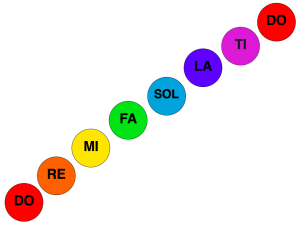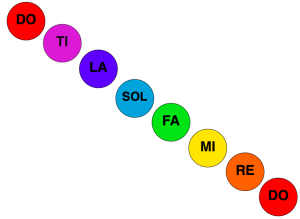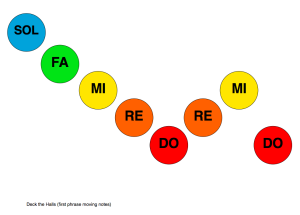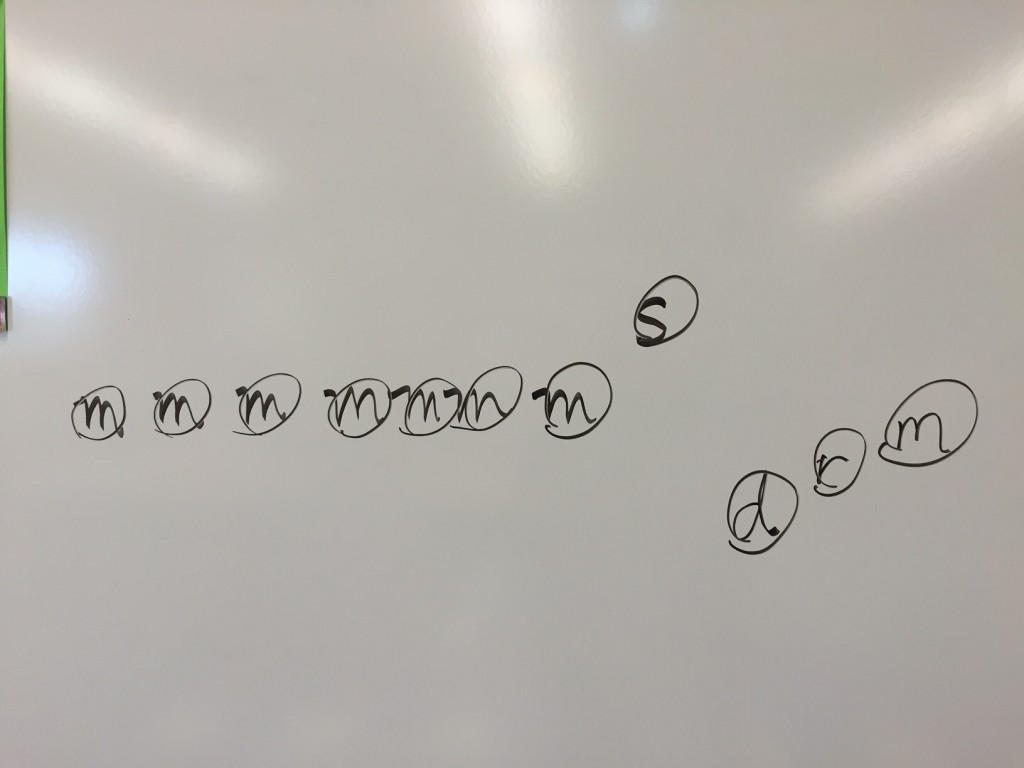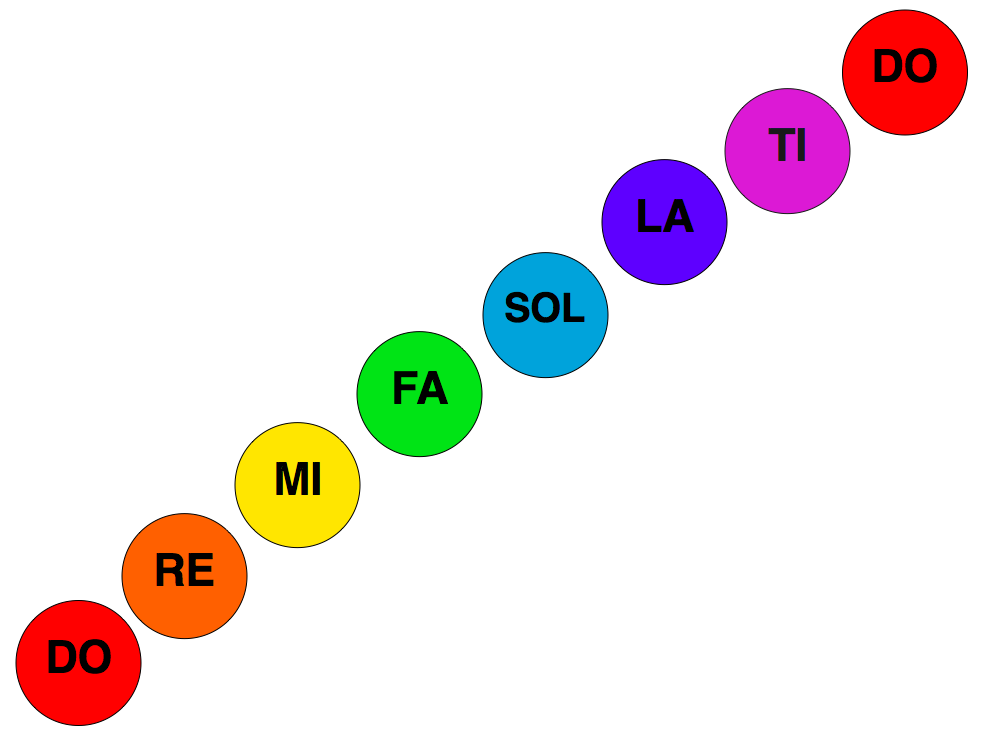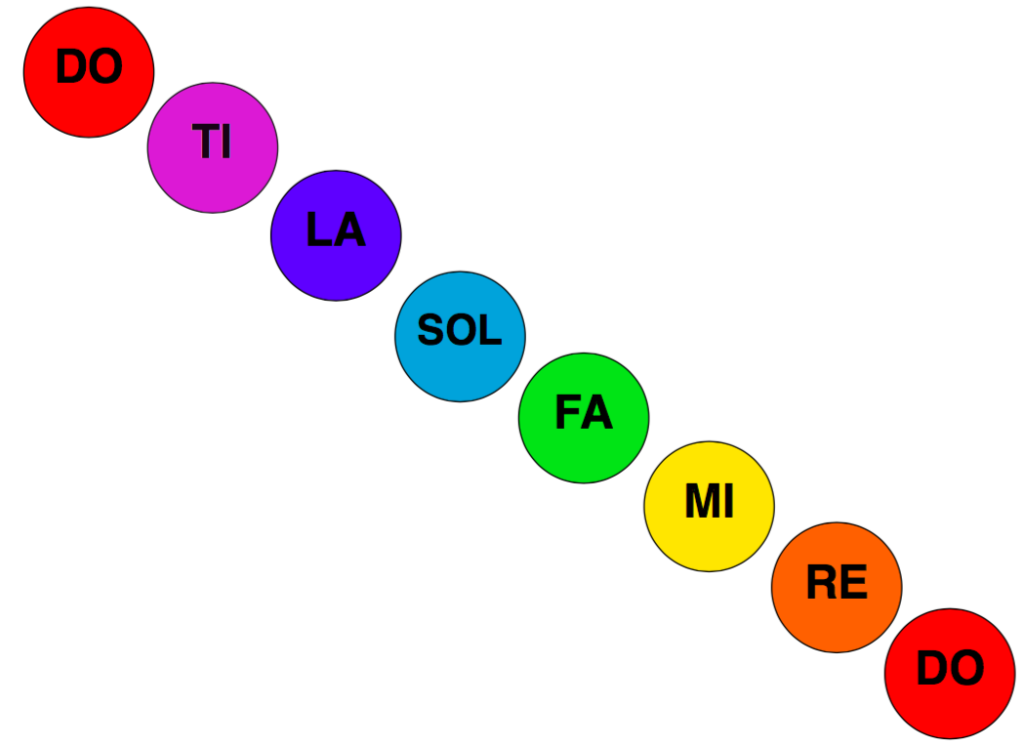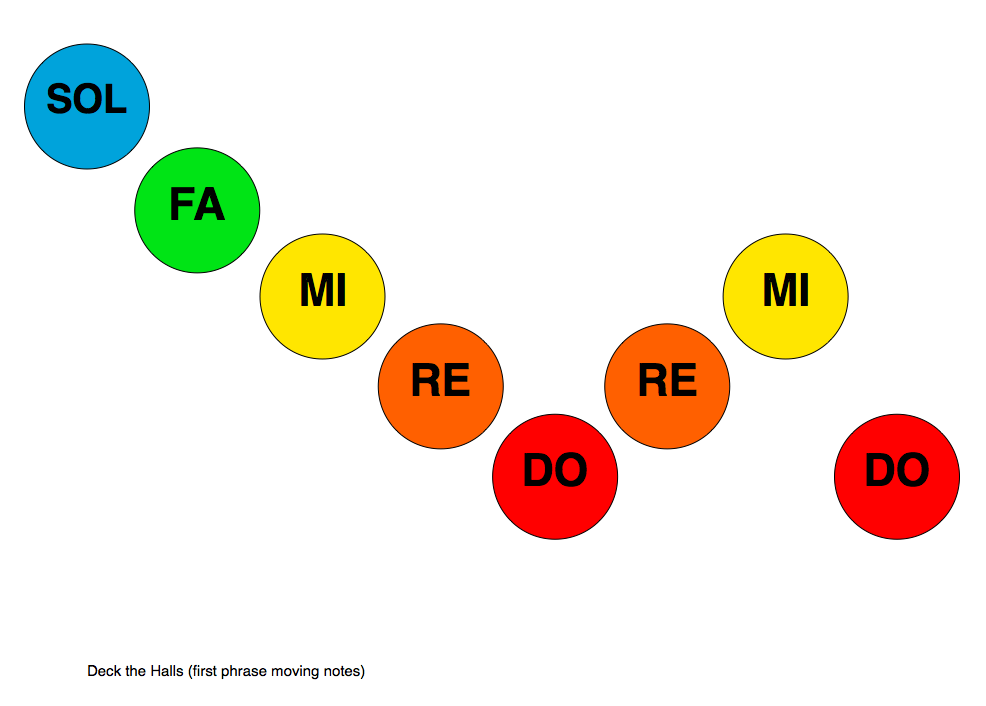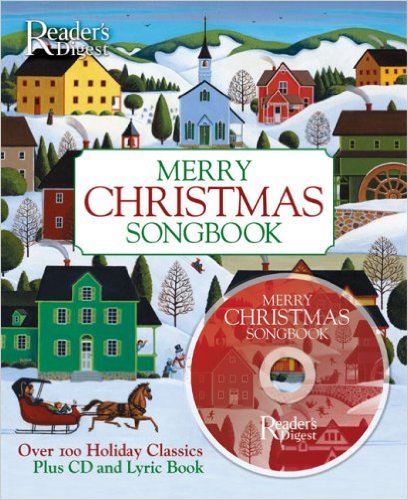 Before beginning my instruction, I told them that I wished we could do music every day because there is so much wonderful Christmas music that we could sing this time of year! I held up the Reader’s Digest Merry Christmas Songbook and explained how fun it is that in my home, my daughters come home from school and open this book up and start to play. And other children will join in singing, and it is SO FUN! I told them that there are so many books of music available to use, including free sheet music online. I encouraged them to sing at home, to visit the library and check out music, to learn to play music so that they can have fun singing and making music at home.
Before beginning my instruction, I told them that I wished we could do music every day because there is so much wonderful Christmas music that we could sing this time of year! I held up the Reader’s Digest Merry Christmas Songbook and explained how fun it is that in my home, my daughters come home from school and open this book up and start to play. And other children will join in singing, and it is SO FUN! I told them that there are so many books of music available to use, including free sheet music online. I encouraged them to sing at home, to visit the library and check out music, to learn to play music so that they can have fun singing and making music at home.
After singing our welcome song, I reviewed ascending…
and descending scales. I showed them those visuals and asked them if they remembered what they were. They did! I asked them if the ascending scale was going up or down, and they answered correctly, and vice-versa for the descending scale. We sang and signed both.
Then I asked them if they remembered the song I taught them last week. Some did: Deck the Halls! We sang it together, and then I asked if anyone one would like to perform it. Two boys stood up and sand in front of the class. (Well, one sang, and the other one got shy.) Then more children got the courage to sing, and we had about 5 girls next. Then we had a third group of 6 girls and one boy. I had to move on after that, but I probably would have had the whole class be willing to perform it! I had several children wanting to sing solos, but I explained that while I would adore having them do that, we needed to move on, because I had another song to teach them.
Note: I always remind the children about performance manners.
I pulled out this visual and asked them if they could guess which song it is:
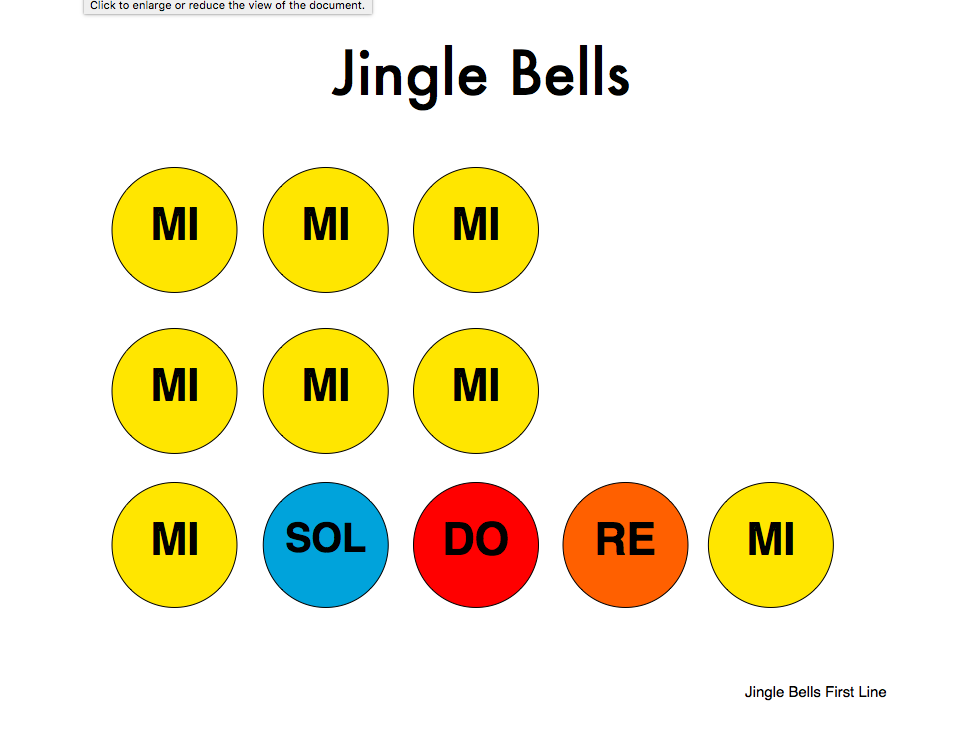
I sang it in Solfa using one hand doing the hand signs and the other pointing to the notes. I sang it slowly, and then I sang it faster. It was easier for them to recognize at a quicker tempo. I had them sing it with me several times (just this first line of the song, in Solfa, with signs).
Then I said, “Let’s map this song on the board so that it shows the movement of the notes, like this other song” (pointing to Deck the Halls moving notes visual).
I wrote m m m m m m on the board, and they sang the notes as I wrote them. (I just wrote the letters first, then circled them as I sang it after we had figured out all the notes.) When we got to the first move to sol, I asked them if we were going up or down. They said up, and I wrote it above the mi with a gap between. “Which note is in between these two notes?” Most of the children didn’t know until we sang an ascending scale, and then they could hear that it was fa. I taught them then that when we skip over a note, it’s called a “skip.” (Later, when we were playing the bells, I explained that skips are intervals.) We continued to figure out each note in the first line, if it was up or down, and if it was a skip or a step.
I told them to think of being on a set of stairs. Were they going to the next step, or did they have to skip a note in the scale? If they had to skip a step–kind of like a jump–then there needed to be a space to show it. I had them stand up. If the notes were the same as we sang, we didn’t move. If we were stepping up a note, we marched in place once. If we were skipping, we hopped up once. So I tried to help them conceptualize the movement of the notes this way.
I also drew, so they could see, with a dry erase marker on my ascending scale page (that is in a plastic page protector, so the marker wipes off with a tissue), ho if we skip from “Daddy Do” we will land on mi. If we skip from mi, we go to sol, etc. In the end the page looked like this: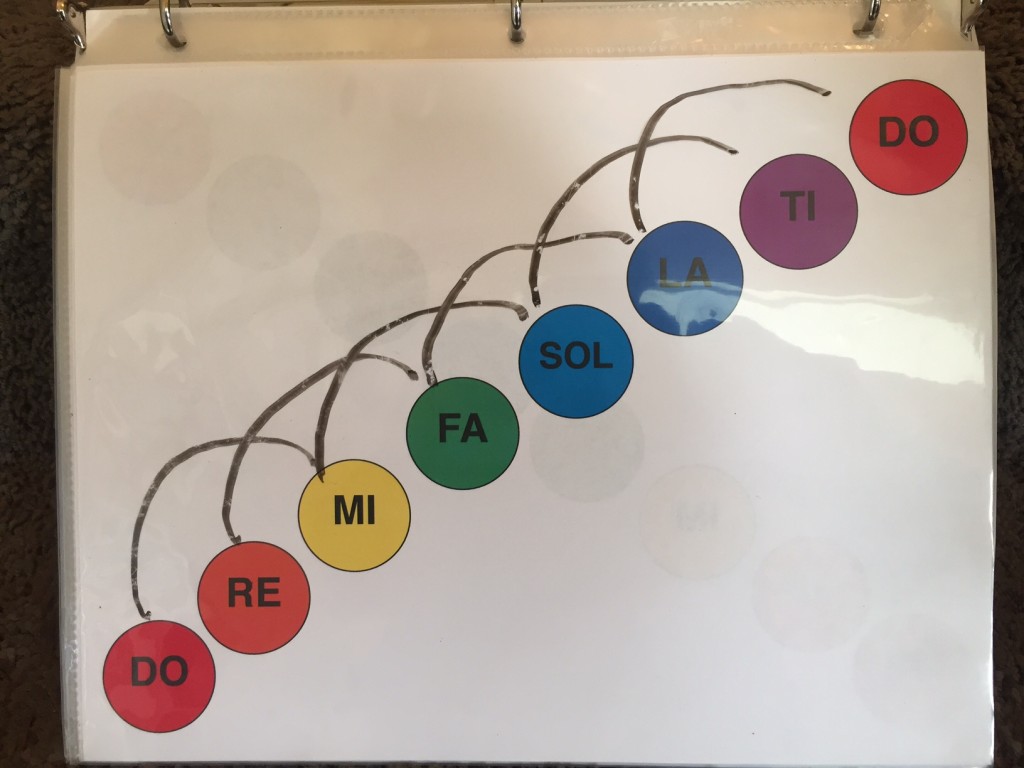
Then we went to our bells and played an ascending scale and a descending scale. Then I had them move do, mi, sol, and ti up into the top part of their case. We played skips a few times, and then we played skips on re, fa, la, do a few times.
Then I pulled out the Jingle Bells music again and had them try it once. It was hard for them. We did it table by table, and I helped individually those children who weren’t getting it.
It was challenging for them. I wish I had music printed out for each child. I wish I could help each child. I wish each child could take a set of bells home with a music book and practice at home. What a difference that would make! If wishes were horses…
